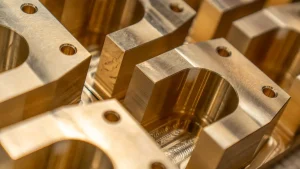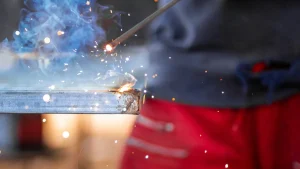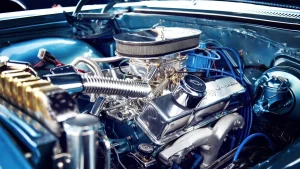シリコンカーバイド(SiC)コーティングされたディープUVLEDスセプターは、半導体およびUVLED製造において不可欠です。 お問い合わせ 塗られるシック コンポーネントは、UVLEDシステムにおける熱安定性、エネルギー効率、運用信頼性を向上させます。 ザ・オブ・ザ・ シックコーティングプロセス 優れた耐熱性と耐久性を提供します。 革新的なソリューションなど カルプロ シック コーティング 更に性能を向上し、高精度な業界に重要な役割を果たします.
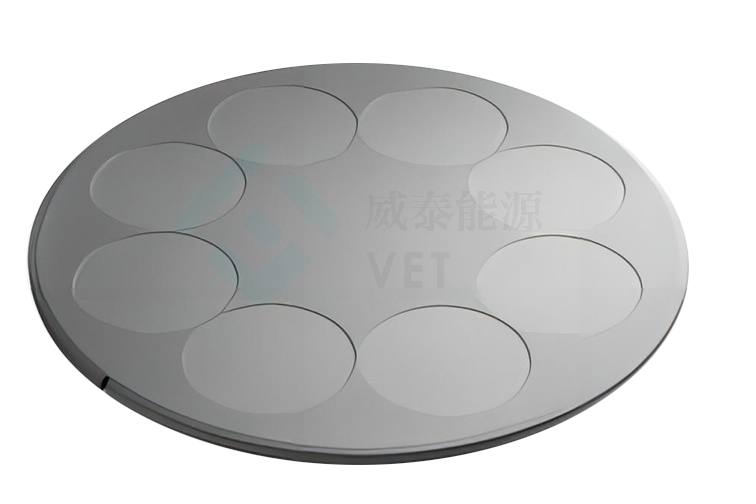
要点
- SiCコーティングディープUVLEDホルダー 熱を安定させ、均等に広げて下さい。 繊細な部分にダメージを与えません.
- SiCコーティングは強く、長く持続します。 ダメージを抑えるので、工場内での交換が少なくなります.
- これらのホールダーは背部熱を弾くことによってエネルギーを救います。 コストを削減し、環境に優しい製品に役立ちます.
SiCコーティングされた深いUVLEDの感受性は何ですか?
構成と構造
SiC-coatedの深いUVLEDの感受性は炭化ケイ素の層と塗られる高純度のグラファイトかケイ素から頻繁になされる基材から成っています。 このコーティングは、極端な温度と過酷な化学環境に耐える堅牢な表面を提供します。 SiCの層は均一性および付着を保障するために、化学蒸気の沈殿物(CVD)のような高度の沈着の技術を使用して、加えられます.
これらの感受性の構成は熱伝導性および機械強さを最大限に活用するために注意深く設計されています。 SiCコーティングは、材料の酸化や腐食に対する抵抗を高め、要求の厳しい製造プロセスに適しています。 また、コーティングの滑らかな表面は汚染の危険を最小限にし、UVLEDの生産のためのきれいな環境を保障します.
UVLEDシステムにおける機能性
SiC-coatedの深いUVLEDの感受性は熱を管理し、安定した操作を保障することによってUVLEDシステムで重要な役割を担います。 半導体層のエピタキシャル成長時に基質のためのプラットフォームとして機能します。 SiCコーティングの優れた熱伝導性は、熱スポットや熱応力を防止し、熱を均等に分配するのに役立ちます.
これらの感受性はまたシステム内の熱を反映し、リダイレクトすることによってエネルギー効率を改善します。 これにより、エネルギー損失を削減し、UVLEDデバイスの全体的なパフォーマンスを向上させます。 さらに、耐久性は長時間にわたる一貫した性能を確保し、頻繁な交換の必要性を減らします.
先進材料と精密なエンジニアリングを組み合わせることで、SiCコーティングスセプターはUVLED製造プロセスの信頼性と効率性に著しく貢献します.
UVLEDの感受性のSiCのコーティングの利点
熱安定性および熱管理
SiC-coatedの感受性器はExcelを包みます サーマル安定性で、UVLEDシステムに欠かせない。 炭化ケイ素の層は熱を効率的に行ない、表面を渡る温度の配分を保障します。 これにより、局所的な過熱を防止し、機密成分を損なうことができます。 安定した熱環境を維持することで、熱応力を低下させ、UVLEDデバイスの長寿を改善します.
SiCコーティングスセプターの優れた熱管理機能により、製造精度も向上します。 エピタキシャル成長プロセスにおける一貫した温度制御により、半導体層の均一性が確保されます。 この結果は、より少なく欠陥のある高品質のUVLEDです.
耐久性と耐摩耗性
SiC-coatedスセプターの耐久性は、他の材料と区別します。 炭化ケイ素の層は極端な温度および粗い化学環境によって引き起こされる摩耗そして破損に抵抗します。 このレジリエンスは、表面劣化を最小限に抑え、スセプターが長時間の機能を維持します.
また、SiCコーティングは、酸化や腐食から基材を保護します。 環境要因に対するこの抵抗は、半導体およびUVLED製造における要求の厳しい用途に理想的です。 長い寿命は頻繁な取り替えのための必要性を減らします、時間および資源を節約します.
高められたエネルギー効率
SiC-coatedの感受性は熱反射および配分を最大限に活用することによってエネルギー効率に貢献します。 炭化ケイ素の層の反射特性はエネルギー損失を減らします、より多くの熱がシステム内で効果的に利用できるようにします。 これにより、運用コストを削減しながらUVLEDデバイスの全体的なパフォーマンスが向上します.
エネルギー効率の向上により、持続可能な製造慣行をサポートします。 高精度産業における価値をさらに捉えながら、一貫した性能を維持する能力.
SiCコーティングされた深いUVLEDの感受性の適用
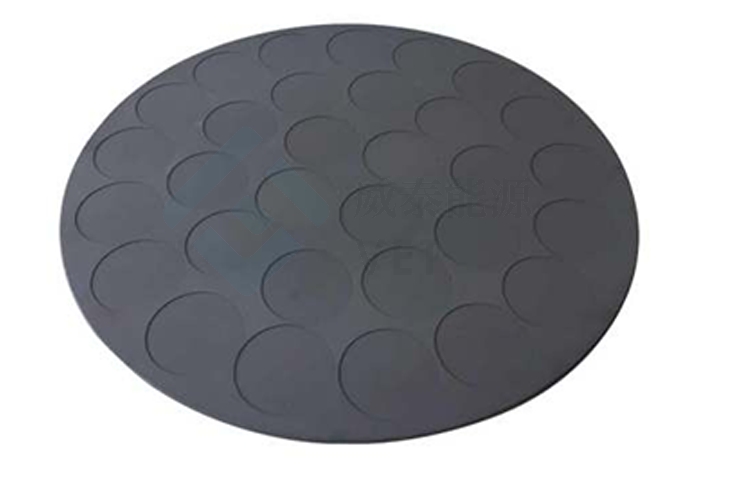
半導体・太陽光発電業界
SiCによって塗られる深いUVLEDの感受性 半導体・光起電業界において重要な役割を果たしています。 製造工程における精密・信頼性が求められます。 SiC-coatedの感受性器はエピタキシャル成長のために要求される熱安定性を提供します、半導体の層の均等性を保障します。 マイクロチップや太陽電池などの機器の効率と性能に直接影響します.
太陽光発電用途では、高温に耐えるSiCコートスセプターの能力と耐薬品性劣化が一貫した生産品質を保証します。 装置の故障によるダウンタイムを削減し、生産性を向上。 クリーンで管理された環境を維持することで、両分野における先進技術の開発をサポートします.
医療・殺菌技術
医療分野は殺菌および消毒のためのUVLEDシステムに頼ります。 SiC-coatedの感受性はエネルギー効率および熱管理を改善することによってこれらのシステムの性能を高めます。 一貫した熱条件を維持する能力は医療機器および表面を殺菌するのに使用されるUVLED装置の信頼性を保障します.
また、SiCコートサスペンサの耐久性は、厳しい環境で長時間の使用に適しています。 摩耗および腐食に対する抵抗は、UVLEDシステムは、医療業界の厳しい要件を満たし、時間をかけて効果的に動作することを保証します.
産業および環境の適用
SiCコーティングされた感受性器は産業および環境の適用で広範な使用を見つけます。 水浄化システムでは、消毒に使用するUVLEDの効率を高めます。 熱安定性とエネルギー効率は、これらのシステムの信頼性の高い動作に貢献し、安全できれいな水を保証します.
工業用セッティングでは、硬化・接合・材料処理などのSiCコートススセプターが対応しています。 過酷な条件に耐え、一貫した性能を維持する能力は、これらの用途に不可欠です。 さらに、環境モニタリングシステムの役割は、グローバルな課題に取り組む上での汎用性と重要性を強調しています.
SiCコーティングされた感受性器がUVLEDの性能を改善する方法
より高い出力と信頼性への貢献
SiCコーティングされた感受性 uVLEDシステムの出力と信頼性を大幅に向上させます。 優れた熱伝導性により、局所的な過熱を防止する熱分布が保証されます。 この安定性により、UVLEDデバイスは最適な効率で動作し、光出力が向上します。 堅牢な炭化ケイ素層は、熱応力リスクを最小限に抑え、デバイスの故障につながることができます.
UVLEDシステムの信頼性は、時間をかけて一貫した性能に依存します。 SiCコーティングスセプターは、半導体製造の要求条件に耐える耐久性のあるプラットフォームを提供します。 摩耗および化学的劣化に対する抵抗は、UVLEDデバイスが長時間使用しても性能基準を維持していることを保証します.
製造における欠陥の低減
SiC-coatedの感受性の使用は製造プロセスの間に欠陥を減らします。 滑らかで均一な表面は汚染の危険を最小にし、エピタキシャル成長のためのきれいな環境を作成します。 このクレンジングは、高い品質の半導体層の生産をより少ない欠陥で保証します.
精密な温度制御、によって有効にされる siCコーティングの熱安定性 受容体は、製造上の欠陥をさらに減らします。 一貫した熱管理は成長プロセスの不規則性を防ぎま、改善された装置均等性に導きます。 欠陥の減少は、メーカーのより高い収量と生産コストを削減します.
一貫した性能のサポート
SiCコーティングされた感受性器は一貫したUVLEDの性能を維持する重要な役割を担います。 熱を効果的に管理する能力は長期デバイスの信頼性のために重要な安定した作動条件を保障します。 炭化ケイ素層の反射特性はエネルギー効率を高め、長期にわたる持続的な性能を支えます.
耐久性と熱的に安定したプラットフォームを提供することで、SiCコーティングされたスセプターはUVLEDシステムが一貫した結果をもたらすことを可能にします。 医療殺菌や産業プロセスなど、精度や信頼性が必要な用途には、この信頼性が不可欠です.
チャレンジと今後の展開
SiC-coated技術の現在の制限
SiCコーティング技術は、非常に効果的ながら、直面する 特定の制限. . SiC上塗を施してあるsusceptorsのための工程は化学蒸気の沈殿のような高度の技術が、高価で、時間の集中的であることができます含んでいます。 これらの要因は、製造全体の費用を増加させ、小規模な運用のためにアクセスできないようにします。 また、コーティングプロセス中に必要とされる精度は、誤りの少ない部屋を残します。これにより、品質が矛盾する可能性があります.
もう一つの課題は、素材の脆性にあります。 シリコンカーバイドは優れた耐久性を提供していますが、極端な機械的ストレスの下で割れる傾向があります。 高い機械的柔軟性を必要とする環境でのアプリケーションを制限する特性。 また、SiC-coatedコンポーネントのリサイクルおよび廃棄は、環境の持続可能性に関する懸念を提起し続けています.
イノベーションと新興トレンド
最近の進歩は、これらの課題に対処することを目指しています。 研究者は、生産コストを削減し、効率性を向上させるための代替堆積方法を検討しています。 プラズマ強化化学蒸気蒸着(PECVD)などの技術は、低温での均一なコーティングを実現することを約束します.
シリコンカーバイドを他の化合物と組み合わせ、柔軟性を高め、脆性を低減するハイブリッド材料にも注力しています。 これらの革新はSiC上塗を施してある感受性器のための適用の範囲を拡大できます。 また、環境にやさしいリサイクル方法を開発し、持続可能な目標と技術が整列する取り組みを行っています.
UVLED製造の未来の可能性
UVLED製造におけるSiC-coated技術の未来は有望です。 生産技術が改善するにつれて、コストバリアが低下し、技術がよりアクセス可能になります。 高機能なUVLEDシステムを必要とする業界全体でより広範な材料特性が採用につながる可能性があります.
SiCコーティングされた感受性器は潜在的なに uVLED製造革命 より高い効率および信頼性を可能にすることによって。 半導体・環境技術の進歩により、これらの産業の未来を形づけることの重要性を捉えています.
SiCコーティングされた深いUVLEDの感受性は熱安定性、耐久性およびエネルギー効率を改善することによってUVLEDの性能をかなり高めます。 半導体、ヘルスケア、環境技術などの産業の発展に重要な役割を果たしています.
SiC技術の未来のイノベーションは、さまざまなアプリケーションにわたって、より効率的で信頼性が高く、持続可能なUVLEDシステムを乗り越えるために、現在の課題を克服することを約束します.
よくあるご質問
SiC-coatedスセプターは他の材料よりも優れていますか?
炭化ケイ素の層は酸化への例外的な熱伝導性、耐久性および抵抗を提供します。 これらの特性は高温および化学的に粗い環境の信頼できる性能を保障します.
SiC-coatedスセプターがUVLEDエネルギー効率を改善する方法は?
反射特性の SiCのコーティングはエネルギー損失を減らします. . これにより、UVLEDシステムの全体的な効率を高める、より熱が効果的に利用することができます.
SiC-coatedスセプターは環境的に持続可能なのですか?
SiC-coated コンポーネントの現在のリサイクル方法は、未開発のままです。 しかしながら、生産・廃棄の持続可能性を向上させるために、環境にやさしいソリューションを継続的に研究しています.
製品の詳細については、下記までお問い合わせください。 steven@china-vet.com またはウェブサイト: www.vet-china.com.


